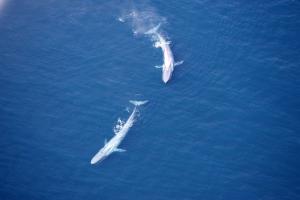Content:
California clean air regulations intended to protect people from pollution spewed by ships are having an unintended but happy effect – saving whales.
The rules, implemented in 2009 and expanded in 2011, require vessels plying California waters to use cleaner but more expensive fuels and to limit emissions in specified areas. To conserve fuel, vessels have slowed down, researchers found. As a result, fewer whales have been killed in collisions with ships, according to a new study published in the journal Ocean & Coastal Management.
The Santa Barbara Channel is a main shipping route for vessels en route to the ports of Los Angeles and Long Beach and also a prime feeding ground for humpback whales and endangered blue whales. Researchers found vessel speeds in the channel fell from 19.7 knots to 13.4 knots (22.7mph to 15.4mph) between 2008 and 2015. Based on previous research, that would result in a 20 percent reduction in the probability that a whale struck by a ship dies. The researchers also noted that strandings of dead whales on California beaches suspected to be caused by ship strikes declined from a four-year average of 7.75 before 2011 to a four-year average of 2.75 in 2012–15.
The association of higher vessel speeds with deadly strikes is well known, said T.J. Moore, a research analyst at the National Oceanic and Atmospheric Administration’s Southwest Fisheries Science Center in La Jolla, California, and lead author of the study. He said he had suspected there would be evidence of ships slowing down off California in response to the new rules. “However, the widespread extent of the slow-steaming trend over time was a bit of a surprise,” he said.
The findings could have global implications as other countries and the International Maritime Organization move to impose similar rules.
But despite the reduction in ship strikes, there are still many whales being killed by collisions.
A blue whale exhales through its blowhole as it passes in front of an oil platform off the coast of Long Beach, California. (Robyn Beck/AFP/Getty Images)
Douglas McCauley was reading the new study while glancing out at the ships traversing the Santa Barbara Channel. He tracked the speeds of a couple of them.
“There was one that was coming in at just over 19 knots, above a blue whale foraging ground, and another at 16 knots,” said McCauley, a marine biologist at the University of California, Santa Barbara. He noted that about 25 percent of the ships traveling through the area in March had been traveling at speeds of at least at 16 knots. “That’s a lot of ships that are blasting through the channel and right over the top of these blue whales.”


